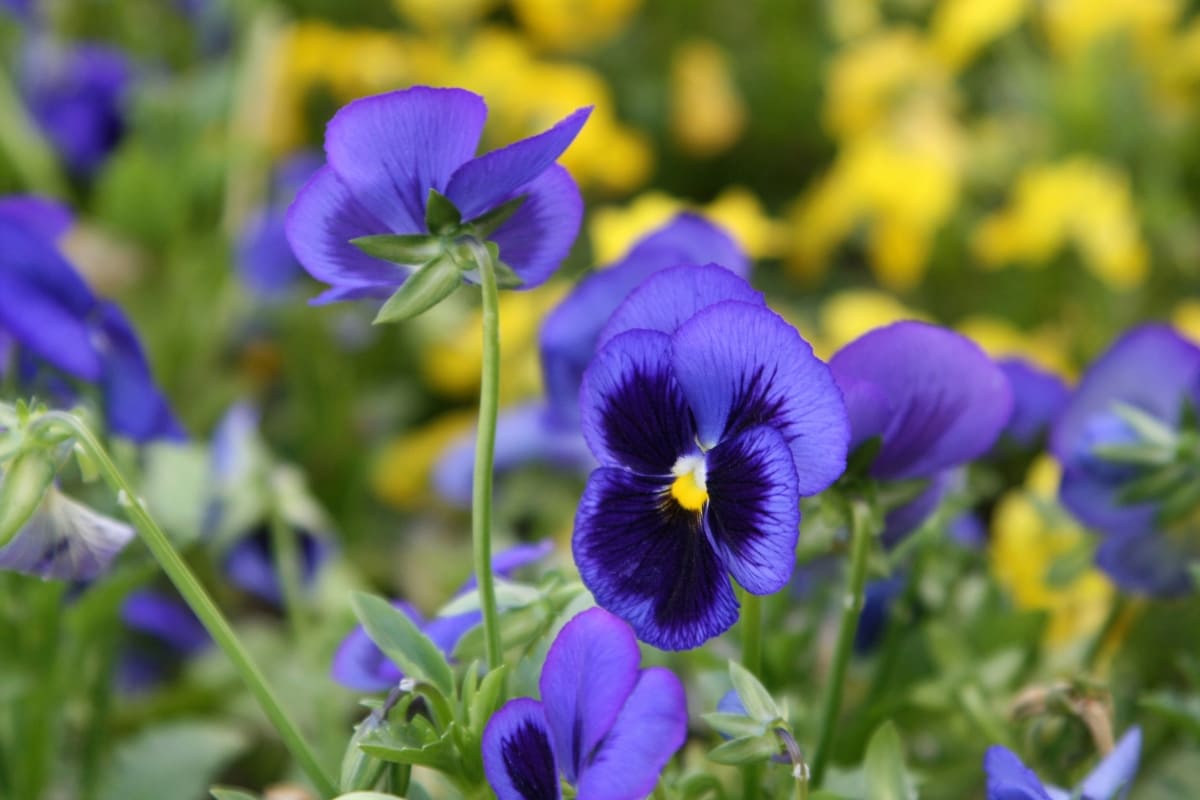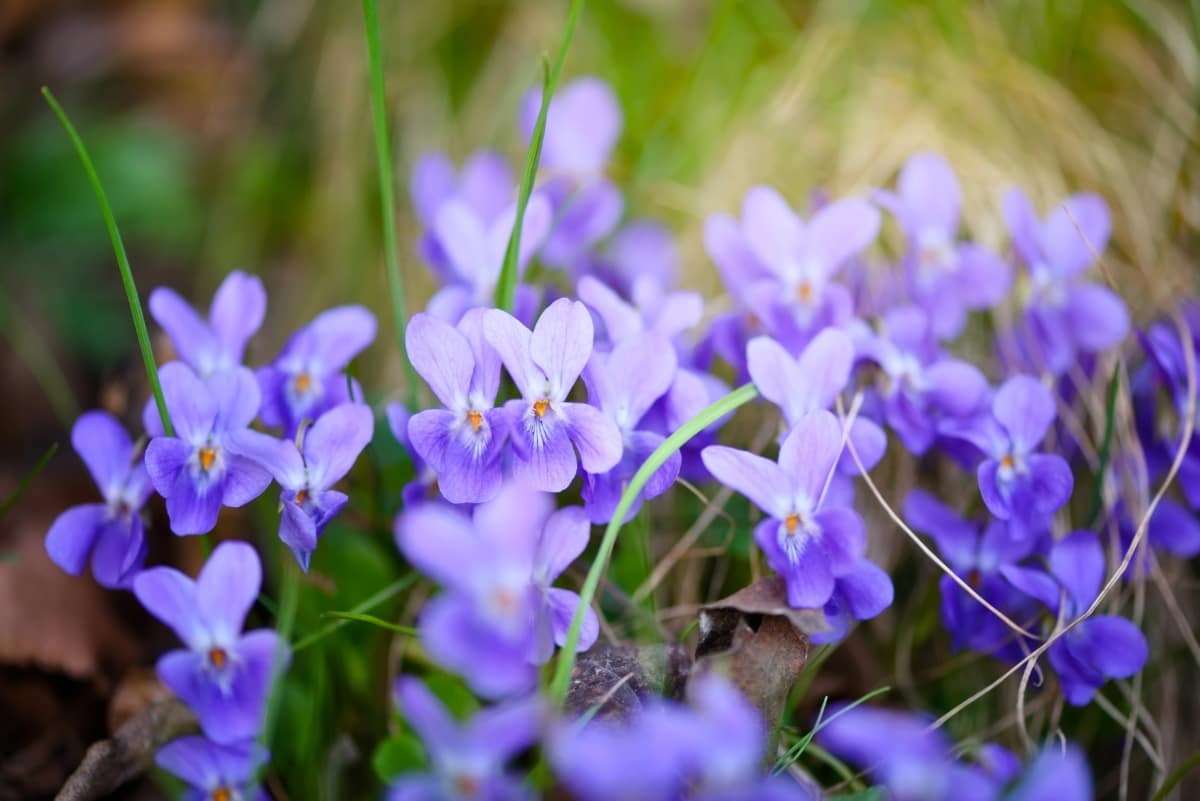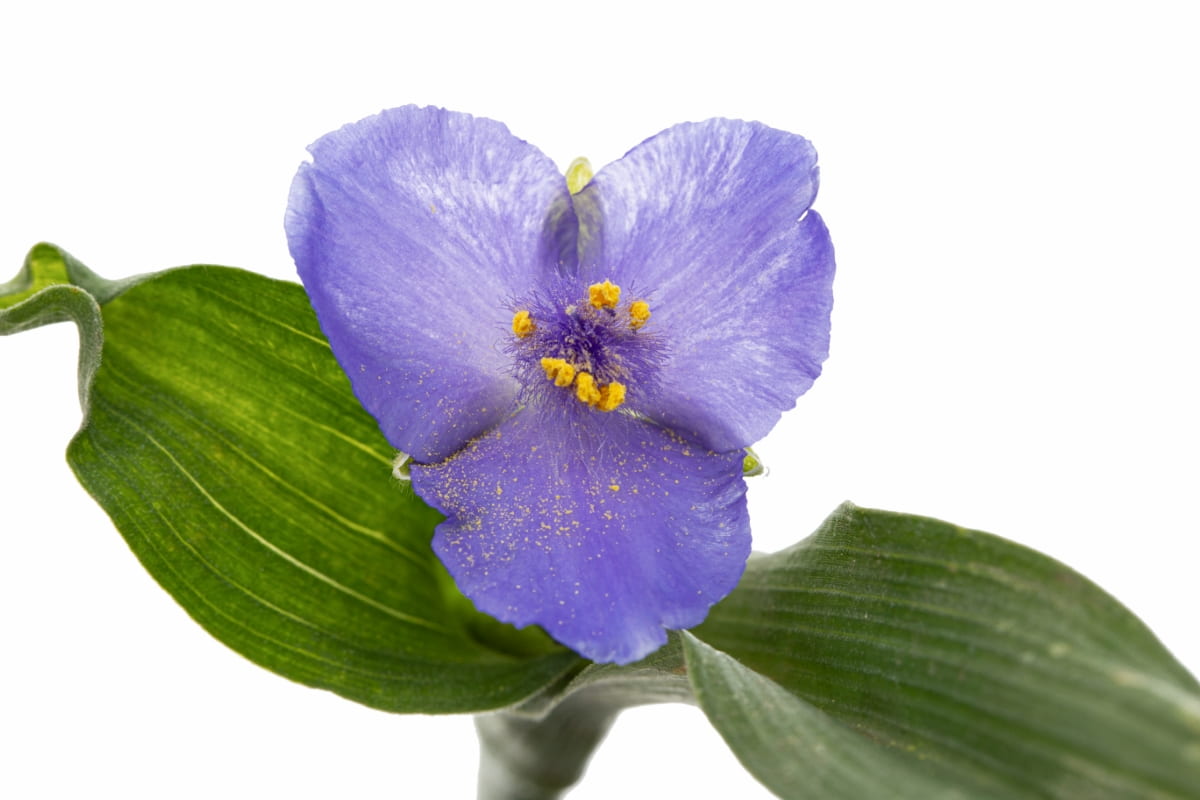Violet crops require efficient pest management to stay healthy and vibrant. This guide explores natural and organic methods to combat common pests that can threaten the beauty of these delicate flowers. By adhering to environmentally friendly and plant-safe practices, you can ensure your violet crops thrive without resorting to chemical treatments.

What is a Violet Crop?
Violet crops encompass various species, the most popular being the sweet violet (Viola odorata) and the African violet (Saintpaulia). Shades of purple, blue, and white are among the stunning colors that make these blooms so famous. While primarily cultivated for ornamental purposes, violets have also found uses in culinary and medicinal traditions.
How to Control Violet Pests Naturally
Types of Pests Attacking Violets
Violet crops face threats from a range of pests. Among the most prevalent culprits are aphids, whiteflies, spider mites, thrips, slugs, snails, and mealybugs. These pests can inflict damage by feeding on plant tissues, leading to wilting, discoloration, and deformation of violet petals and leaves.
How Pests Damage Violets
For example, aphids can quickly weaken violet plants by sapping their vital fluids, resulting in wilting and the distortion of leaves and flowers. Whiteflies excrete a sticky honeydew, promoting the growth of sooty mold on violet foliage. Mealybugs are notorious for causing yellowing and stunted growth, leaving behind a waxy residue that mars the plant’s appearance.
Understanding Violet Crop Pests: Identifying Common Pests and Their Damage
- Aphids: These small, soft-bodied insects feed on sap, causing wilting and leaf and flower distortion.
- Whiteflies: They produce honeydew and can foster sooty mold growth on violet leaves, affecting plant appearance.
- Spider Mites: Tiny arachnids that feed on plant cells, resulting in stippling, webbing, and damage to violet foliage.
- Thrips: Slender insects that cause stippling and distortion of violet leaves and can transmit diseases.
- Slugs and Snails: These mollusks feed on violet leaves, leaving unsightly holes that impact the plant’s aesthetics.
- Mealybugs: Mealybugs can induce yellowing and stunted growth in violet plants while excreting a waxy substance.
Prevention is Key: Implementing Effective Strategies to Control Violet Pests
- Choosing Resistant or Tolerant Varieties: Opt for violet cultivars that are naturally resistant or tolerant to common pests in your area.
- Planting Healthy Seeds or Seedlings: Strong, healthy plants are less susceptible to pest damage.
- Crop Rotation: Avoid planting violets in the same spot year after year to disrupt the life cycles of soil-borne pests.
- Removing Weeds and Debris: Maintain a clean garden environment to eliminate hiding spots for pests.
- Inspecting Plants Regularly: Frequent inspections allow for early pest detection and intervention.
- Practicing Good Sanitation and Hygiene: Dispose of infested plant parts properly and maintain a clean garden.
- Avoiding Overwatering or Overfertilizing: Excessive moisture and nutrients can attract pests, so monitor your watering and fertilizing practices.
- Providing Adequate Air Circulation and Sunlight: Proper light and airflow support healthier, more resilient plants.
In case you missed it: How to Control Lavender Pests Naturally: How to Get Rid of Them with Natural and Organic Treatment

Natural Remedies for Violet Crop Pest Control: Harnessing the Power of Companion Planting
- Chives: Chives can repel aphids and serve as protective neighbors for violets.
- Garlic: Planting garlic nearby can deter aphids, spider mites, thrips, and leafhoppers.
- Rosemary: Rosemary acts as a natural repellent for aphids, caterpillars, leafhoppers, and spider mites when planted alongside violets.
- Marigold: Marigolds can repel aphids, flea beetles, leafminers, and nematodes, safeguarding your violets.
- Sage: Sage, when planted near violets, can deter aphids, caterpillars, flea beetles, and slugs.
Organic Treatments for Violet Crop Pests: Safe and Environmentally Friendly Solutions
- Neem Oil: It works as a pest deterrent against a variety of insects, such as mealybugs, thrips, spider mites, aphids, caterpillars, cutworms, flea beetles, leafhoppers, and leaf miners. It also guards against fungal infections.
- Insecticidal Soap: Made by combining soap and water, this solution effectively kills soft-bodied pests by dehydrating and suffocating them.
- Diatomaceous Earth: A fine powder derived from fossilized algae, diatomaceous earth works by piercing and drying out the exoskeletons of hard-bodied pests.
- Bacillus thuringiensis (Bt): This naturally occurring bacterium targets caterpillars by infecting their digestive systems. It poses no threat to animals, people, or helpful insects.
Creating a Healthy Garden Ecosystem: Attracting Beneficial Insects to Combat Violet Pests.
- Ladybugs: Ladybugs are natural predators of soft-bodied pests such as aphids, spider mites, and thrips.
- Lacewings: Lacewings are effective predators of aphids, caterpillars, leafhoppers, leafminers, mealybugs, spider mites, and whiteflies.
- Parasitic Wasps: These are natural parasites of caterpillars, cutworms, leafminers, and weevils, making them valuable allies in pest control.
- Hoverflies: Hoverflies feed on aphids and thrips and can also assist in pollinating violet flowers.
To Attract Beneficial Insects to Your Violet Garden, Consider These Steps
- Plant Flowers That Provide Nectar and Pollen: Companion flowers that produce nectar and pollen, such as marigolds and lavender, can draw beneficial insects to your garden.
- Provide Water Sources: Set up small water sources like birdbaths to give beneficial insects a place to drink.
- Offer Shelter and Nesting Sites: Create an inviting environment for beneficial insects by providing shelter, such as mulch, rocks, logs, or insect houses.
- Avoid Using Pesticides Harmful to Beneficial Insects: Reduce the chemical pesticides you use, as they may damage the insects you are trying to attract.
In case you missed it: How to Control Tulip Pests Naturally: How to Get Rid of Them with Natural and Organic Treatment

Homemade Pest Repellents: DIY Recipes to Deter Violet Pests Naturally
Garlic Spray Repellent: Garlic spray is effective against various pests, including aphids, caterpillars, flea beetles, leafhoppers, spider mites, thrips, and mealybugs. Ten cloves of garlic and four cups of water are blended to form a garlic spray. The mixture is then strained, and a bit of dish detergent is added to assist the solution sticking to the plants.
Hot Pepper Spray: Hot pepper spray can be made by boiling 1/4 cup of chopped hot peppers in 2 cups water for 15 minutes. After cooking, strain the mixture and add a few drops of dish soap. This spray can deter a range of pests.
Tomato Leaf Spray: Soak 2 cups of tomato leaves in 2 cups of water overnight, then strain the mixture. This tomato leaf spray can be used to deter certain violet pests.
Physical Barriers and Traps: Physical Methods to Keep Violet Pests at Bay
- Row Covers: Row covers are a physical barrier that protects violet plants from various pests, including aphids, caterpillars, cutworms, leafhoppers, leaf miners, spider mites, and weevils. These covers create a barrier that prevents problems from reaching your violets.
- Collars: Collars, often made of materials like cardboard or plastic, can be placed around the base of violet stems to prevent soil-borne pests from reaching the plant’s roots and contains.
- Sticky Traps: Sticky traps, such as yellow or blue sticky cards, can be used to attract and capture flying pests like whiteflies and thrips, helping to reduce their populations.
- Beer Traps: Beer traps, filled with beer, can effectively attract and drown slugs and snails, preventing them from damaging your violet crops. These traps also help to reduce weed growth around your plants.
Violet Crop Pest Control with Natural and Organic Treatment
| Insect Pest | Natural and Organic Management |
| Aphids | Companion Planting: Plant chives, garlic, or marigolds to deter aphids. Insecticidal Soaps: Use soapy water to spray and control aphid populations. Neem Oil: Neem oil can be applied as a natural insecticide. |
| Whiteflies | Companion Planting: Marigolds can repel whiteflies. Insecticidal Soaps: Use soapy water to spray and control whitefly populations. Neem Oil: Neem oil is effective against whiteflies. |
| Spider Mites | Diatomaceous Earth: Apply this fine powder to deter and kill spider mites. Neem Oil: Neem oil can suffocate and control spider mite infestations. Spraying with Water: A strong blast of water can dislodge spider mites from plants. |
| Thrips | Companion Planting: Plant rosemary, sage, or nasturtiums to repel thrips. Insecticidal Soaps: Use soapy water to control thrip populations. Neem Oil: Neem oil can be effective against thrips. |
| Slugs and Snails | Beer Traps: Bury containers filled with beer to attract and trap slugs and snails. Yeast Solution: Create a yeast and water solution in a container to trap these pests. Copper Barriers: Copper strips or tape can be used to create barriers that deter slugs and snails. |
| Mealybugs | Beer Traps: Bury containers filled with beer to attract and trap slugs and snails. Yeast Solution: Create a yeast and water solution in a container to trap these pests. Copper Barriers: Copper strips or tape can create barriers that deter slugs and snails. |
In case you missed it: How to Control Poppy Pests Naturally: How to Get Rid of Them with Natural and Organic Treatment

FAQs Related to Controlling Violet Crop Pests
How do Pests Damage Violets?
Pests like aphids, mealybugs, and whiteflies can damage violets by feeding on the plant’s sap, causing discoloration, wilting, and the presence of honeydew, which can attract other pests.
Are There Any Natural Solutions for Violet Pest Infestations?
Yes, natural remedies are available, including companion planting, organic treatments, and attracting beneficial insects.
Conclusion
Effectively managing pests in your violet crop requires a holistic approach that includes prevention, natural and organic treatments, attracting beneficial insects, and using physical barriers and traps. By implementing these strategies, your violets can thrive while being safeguarded against pest infestations.
- Beneficial Insects in Pest Management
- Natural Solutions for Pest Control in Flower Gardens
- Types of Fungicides Used in Agriculture
- Common Issues in the Fruit Development Stage of Pomegranate Farming
- Fruit Development Issues in Papaya: Easy Solutions and Treatment
- Soil-Borne Diseases and How to Protect Your Plants
- Practices to Prevent Disease Spread in the Garden
- From Wilted to Thriving: How to Treat Root Rot Naturally in Houseplants
- Natural Remedies to Cure Brown Spots on Fig Tree Leaves